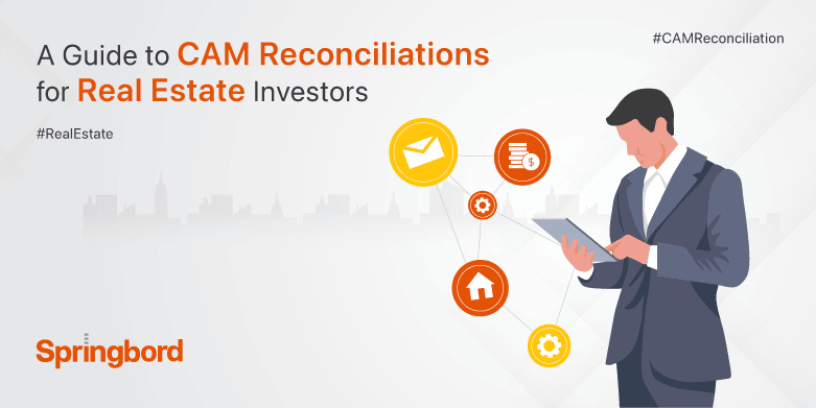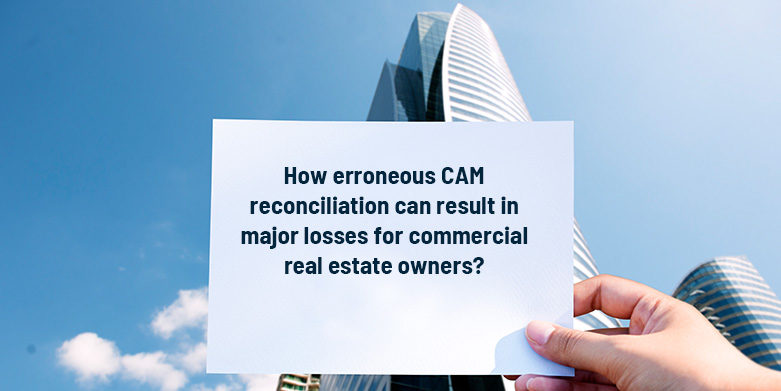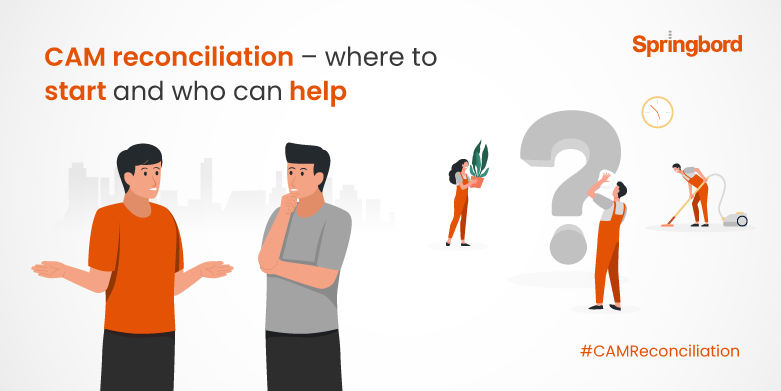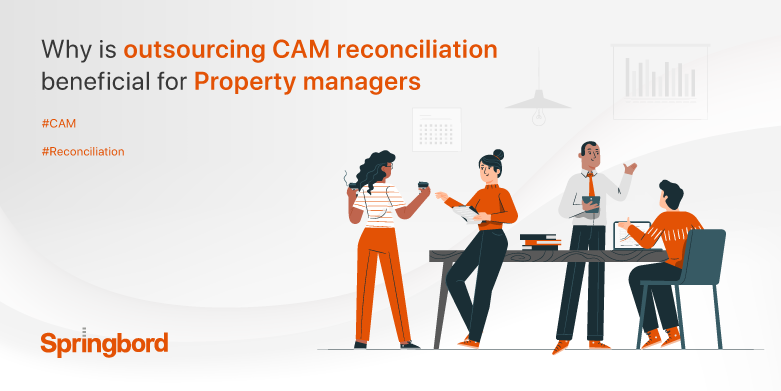 Read time 4 min
Read time 4 minCommon Area Maintenance (CAM) charges are fees that commercial tenants pay in addition to their base rent to cover the costs of maintaining common areas of a building, such as lobbies, elevators, and restrooms. These charges are often found in multi-tenant commercial properties, such as shopping centers, office buildings, and industrial parks.
As a commercial real estate investor, understanding CAM reconciliations is essential to ensure that your properties are generating the income they should be.
A CAM reconciliation is the process of comparing the budgeted CAM charges to the actual expenses incurred by the property, and determining whether the tenant should be reimbursed or charged more.
What is a CAM Reconciliation?
A CAM reconciliation is an annual review process that compares the budgeted CAM charges to the actual expenses incurred by the property.
The budgeted charges are determined at the beginning of the year, based on estimates of the costs to maintain the common areas of the building. The actual expenses are the costs that were actually incurred during the year, such as utilities, repairs, and cleaning.
Calculating CAM Reimbursement
The process of calculating CAM reimbursement is relatively simple. First, the total budgeted CAM charges for the year are divided by the total square footage of the building. This gives the CAM rate per square foot. For example, if the budgeted CAM charges for the year are $100,000 and the building is 100,000 square feet, the CAM rate per square foot is $1.
Next, the CAM rate per square foot is multiplied by the tenant’s square footage to determine their pro-rata share of the CAM charges.
For example, if a tenant occupies 10,000 square feet of the building, their pro-rata share of the CAM charges would be $10,000 ($1 x 10,000).
Finally, the tenant’s pro-rata share of the CAM charges is compared to the actual CAM charges they paid during the year. If the tenant paid more than their pro-rata share, they are entitled to a reimbursement. They will be charged extra if they paid less.
Common Problems While Figuring Out CAM Reconciliation
One common problem that can arise during CAM reconciliation is that the budgeted CAM charges and the actual expenses do not match. This can happen for a variety of reasons, such as unexpected repairs or changes in the cost of utilities.
For example, if the budgeted CAM charges for the year are $100,000 and the actual expenses incurred by the property are $110,000, the tenants will have to pay more than their pro-rata share of the CAM charges. In this case, the tenants would be charged an additional $10,000, which would be divided among them based on their square footage.
Things to Consider Before Beginning the CAM Reconciliation Process
Before beginning the CAM reconciliation process, it is important to remember to gather all the necessary information. This includes the budgeted CAM charges, the actual expenses incurred by the property, and the square footage of the building and each tenant.
It is also important to have a clear understanding of the lease terms and any provisions related to CAM charges.
Why CAM Reconciliation Can Be Difficult
CAM reconciliation can be a difficult process for several reasons. The large amount of information being analysed is a significant obstacle.
You need to gather and organize information about the expenses associated with the common areas of your property. This information can include things like utility bills, insurance costs, and maintenance expenses. It can be difficult to keep track of all this information and ensure that it is accurate.
Another challenge is that the process can be very time-consuming. It takes a lot of time to go through all the data and make sure that everything is accurate. This can be especially difficult if you have multiple properties that you need to reconcile.
CAM Reconciliation & Tenant Relationships
CAM reconciliation can also have a significant impact on tenant relationships. If the process is not done correctly, tenants may be overcharged for their share of the common area expenses.
This can lead to dissatisfaction and even disputes. In addition, if the process is not transparent, tenants may feel that they are not being treated fairly. This can cause scepticism and disappointment.
Making CAM Reconciliation Easier
Fortunately, there are ways to make CAM reconciliation easier. One of the best ways is to use a CAM reconciliation service provider like Springbord. Springbord specializes in CAM reconciliation and can help you manage the process more efficiently.
They can help you gather and organize the data, ensure that it is accurate, and make sure that everything is transparent. This can save you a lot of time and help you avoid disputes with tenants.
CAM Reconciliation & Private Equity Real Estate
CAM reconciliation is also important in private equity real estate. Private equity firms often invest in properties that are leased to tenants. They need to ensure that the properties are being managed correctly and that the tenants are being treated fairly.
CAM reconciliation is a critical part of this process. It helps private equity firms ensure that the expenses associated with the common areas of the property are being handled correctly.
Conclusion
CAM reconciliation can be a difficult and time-consuming task for real estate investors. However, by using a CAM reconciliation service provider like Springbord and utilizing technology, the process can become much easier.
Our CAM reconciliation service is designed to ensure that you’re only paying your fair share of CAM expenses. We’ll review your current CAM charges, compare them to industry standards, and work with the property management team to resolve any discrepancies.
With Springbord, you can have peace of mind knowing that your CAM charges are accurate and fair. By keeping these things in mind, you can make sure that your properties are being managed correctly and that your tenants are being treated fairly.
Let us help you take the hassle out of CAM reconciliations, so you can focus on growing your real estate portfolio.







